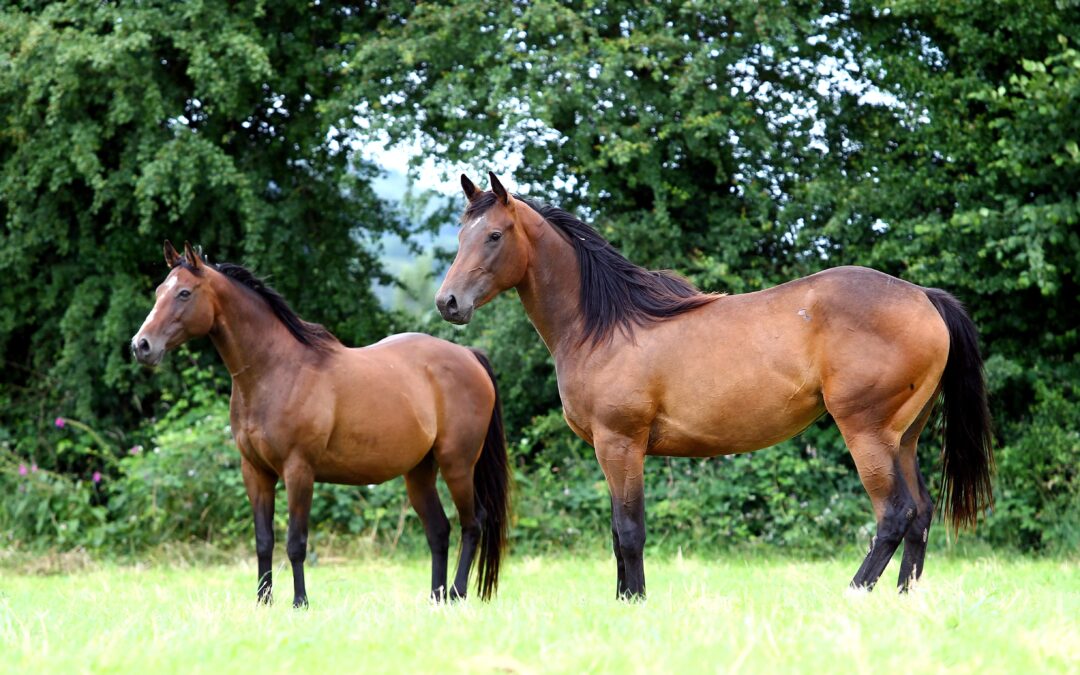The break in a racehorse is a period of rest. With performance being the key to success, the importance of a proper break for horses may arise. In this article, we will explore in detail the concept of the ‘break’ in racehorses and explain why it is a crucial element in maximising their performance.
Why take a break? How do you set it up and what benefits can it bring?
What’s the right way to take a break?
The break, also known as the active rest or recovery period, is an essential phase in the training of racehorses. It is a period during which the horse is removed from intensive training sessions and competitions. However, it is not simply a period of inactivity: the break is an active process of physical and mental recovery that allows the horse to recharge its batteries.
Giving a racehorse a break is an important part of its training and care regime. A racehorse’s body is under a huge amount of stress during racing and training, and it’s essential to give him time to rest and recover.
A good way to give a racehorse a break is to reduce its training programme. This can be done by reducing the number of days worked each week or by reducing the intensity of the training. For example, instead of working them at a fast rhythm, they can be walked or trotted over shorter distances.
Another good way to give a racehorse a break is to give him plenty of time to relax in the pasture, so he can move around freely, get some fresh air and exercise in a more natural setting.
When is the best time to take a break?
The crucial question of when to introduce a break for a racehorse is based on careful planning and an understanding of each horse’s individual needs. There is no universal timetable, as each horse has specific requirements in terms of training, competition and recovery.
When racehorses lose form, it may be a sign that they need a break or a change in their training routine. There are a number of indicators of a racehorse’s declining fitness, including:
-
- Decline in performance: If a horse’s running times are slower than usual, or if they are not performing as well as they have in the past, this may be a sign that he is losing fitness.
- Increased fatigue: If a horse seems more tired than usual after training or racing, it may be a sign that he is not recovering as well as he should.
- Changes in behaviour: If a horse is more irritable or less willing to work than usual, it may be a sign that he’s not feeling well or needs a break.
- Physical changes: If a horse loses muscle mass, weight or appears to be in poor condition, it may be that he is not resting or recovering enough.
What are the benefits of taking a break?
Introducing regular breaks into a racehorse’s training has a multitude of benefits for its overall health and performance.
Taking a break has a number of health benefits. Firstly, a break helps the horse’s physical recovery and prevents the risk of injury. Muscles, tendons, bones and joints will be able to regenerate, and so avoid the risk of fatigue fractures, for example.
A break also allows the horse to recharge its batteries and regenerate its energy, as well as restoring hormonal balance, which can be damaged by repeated stress.
In terms of performance, a break also has its advantages. By taking a break, the muscles will be able to rebuild themselves and come back stronger for the training sessions and competitions that follow. Horses have a muscular memory that enables them to return to their initial performance levels after a period of rest.
The horse’s concentration and motivation will also be positively impacted by letting it relax completely. In this sense, we can simply compare it to a human holiday: we come back more motivated and refreshed after a break from work. What’s more, horses that benefit from regular breaks tend to maintain more consistent performance over the long term, as well as a longer career, due to less chronic fatigue and less overwork.
To find out more about the difference between conditioning and training, read this article.
If a break is to be successful, the return to training that follows is important and must be gradual. EQUIMETRE uses data to help trainers get their horses back to work. Find out more in the article “Supporting the return to work with data”.
Conclusion
Breaks are not simply interruptions in training, but investments in the health, well-being and performance of racehorses. By adopting a balanced and individualised approach, the introduction of breaks can only bring positive results while preserving the horse’s mind, strength and performance.
Keywords: break, EQUIMETRE, fatigue fractures, fatigue
Sources :
Pascal, A. (2022). Comment remettre un cheval au travail après une pause ? [online] Casalys Nutrition. Available at: https://www.casalys-nutrition.fr/cheval-travail-apres-pause/ [Accessed 30 Aug. 2023].
Smart, V. (n.d.). Life of a racehorse. [online] Retraining of Racehorses. Available at: https://www.ror.org.uk/care-and-training/life-of-a-racehorse.
www.equesure.co.uk. (n.d.). How to break in a horse | Equesure. [online] Available at: https://www.equesure.co.uk/contact-us/news-events/how-to-break-in-a-horse/ [Accessed 30 Aug. 2023].


